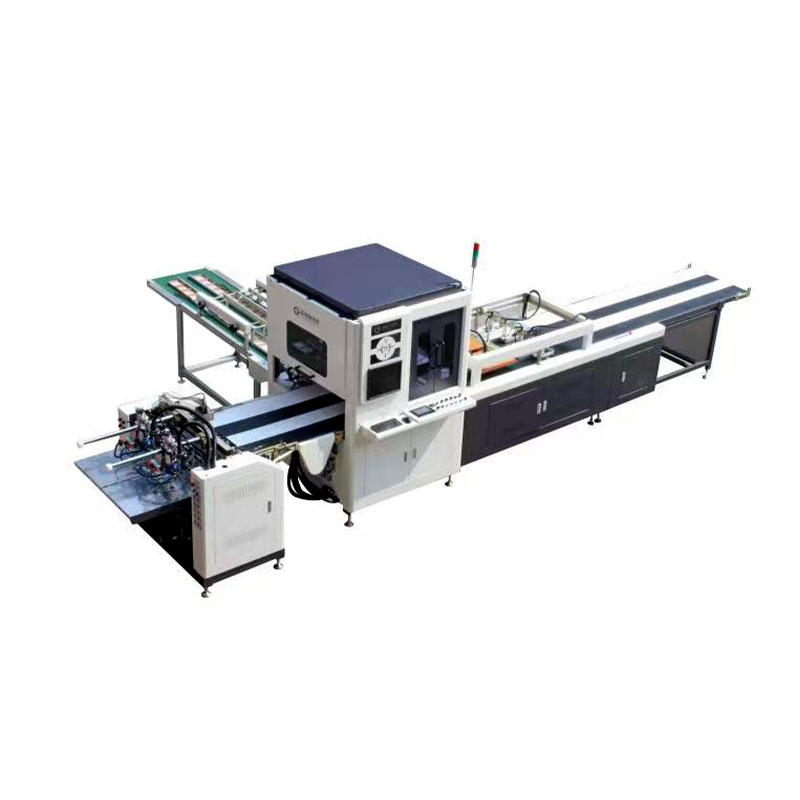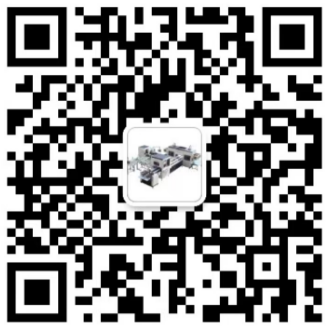Introduction
In the dynamic world of packaging, where creativity meets functionality, rigid boxes have carved a niche for themselves. These premium containers protect their contents and create a lasting impression on consumers. Central to their production is the brutal box-making machine—a marvel of engineering designed to craft these elegant boxes efficiently.
But here's the challenge: materials used in rigid box manufacturing vary significantly. From sturdy paperboard to delicate specialty papers, the thickness and composition of materials can differ widely. This diversity raises an important question: How can a rigid box-making machine adapt to these various material types and thicknesses while ensuring a consistently high-quality output?

Understanding Material Variability
To comprehend how a rigid box-making machine can tackle the variability of materials effectively, it's essential first to recognize the range of materials used to produce wooden boxes.
Material Diversity
In rigid box manufacturing, materials come in various forms and characteristics. These include:
Paperboard: Commonly used for its durability and versatility.
Cardboard: Offers a cost-effective option for specific applications.
Specialty Papers: Used for high-end, custom-designed boxes.
Artboard: Provides a smoother and more print-friendly surface.
Thickness Variations: Materials can vary in thickness, adding to the complexity.
Impact of Material Type and Thickness
The choice of material can significantly affect the final rigid box's structural integrity, appearance, and feel. For instance, specialty papers may require more delicate handling than sturdy cardboard. Moreover, the thickness of the material affects the machine's cutting, folding, and gluing processes.
Now, the question arises: How can a rigid box-making machine adapt to this wide-ranging material variability while ensuring the quality of the final product?
Machine Adaptability Features
Rigid box-making machines are not one-size-fits-all solutions; they are sophisticated pieces of equipment designed to accommodate the nuances of different materials and ensure consistent quality. Here are some key adaptability features that these machines offer:
1. Adjustable Cutting Pressure and Speed
Modern rigid box-making machines often come equipped with adjustable cutting parameters. Operators can fine-tune the cutting pressure and speed to match the specific material's characteristics. Higher cutting pressure may be necessary for thicker fabrics, while delicate specialty papers may require slower cutting speeds to prevent tearing.
2. Temperature Control
Temperature plays a crucial role in the adhesion of materials during the box-making process. These machines allow for precise temperature control, ensuring that the adhesive properties of the materials are optimized for the best bond. This adaptability is especially vital when working with materials that have different melting points.
3. Material Handling Systems
Efficient material handling is essential for adapting to different material types and thicknesses. Modern machines often feature advanced material feeding, alignment, and stacking systems. These systems are designed to handle materials gently and accurately, reducing the risk of damage, especially for delicate fabrics.
4. Tooling and Die-Cutting Options
Some rigid box-making machines offer interchangeable tooling and die-cutting options. This allows operators to switch between tools optimized for different materials and box designs, enhancing adaptability.
5. Software and Programming
Sophisticated software is another critical component of adaptability. Many machines have user-friendly interfaces that allow operators to input specific parameters and customize settings based on the material being used. Some even come with pre-programmed material profiles for popular materials, simplifying the setup process.
Quality Assurance
Ensuring a consistently high-quality output is the ultimate goal of any rigid box-making machine. The adaptability features discussed earlier play a pivotal role in achieving this goal:
1. Precise Cuts and Folds
The ability to adjust cutting pressure and speed ensures that the machine can make precise cuts without tearing or damaging the material, regardless of thickness. This precision also extends to folding, creating clean and sharp folds that contribute to the overall box quality.
2. Accurate Adhesive Application
Temperature control and advanced adhesive systems ensure that the right amount of adhesive is applied uniformly to the materials. This is critical for creating strong and durable bonds, especially when working with various material types.
3. Quality Control Mechanisms
Many modern machines have quality control mechanisms, such as sensors and cameras, to monitor the real-time production process. These systems can detect defects or irregularities and make necessary adjustments, reducing the likelihood of producing subpar boxes.
4. Consistency Across Materials
The adaptability features of rigid box-making machines mean they can consistently produce high-quality boxes across various materials. This consistency is a significant advantage for manufacturers who need to switch between material types and thicknesses frequently.
5. Reduction in Material Waste
These machines can significantly reduce material waste by adapting to different materials and minimizing errors. This aligns with sustainability goals and can lead to cost savings over time.
In summary, the adaptability features of rigid box-making machines enable them to handle a variety of materials but also ensure that each box meets the highest quality standards. This capability particularly appeals to manufacturers looking to deliver top-notch packaging solutions to their customers.
Tips for Choosing the Right Machine
Selecting the correct rigid box-making machine is crucial to achieving the desired results. Here are some valuable tips to consider when making your decision:
1. Material Compatibility
Begin by assessing the types and thicknesses of materials you will work with. Ensure your chosen machine has the adaptability features required to handle your specific materials effectively.
2. Customization Options
Look for machines that offer a high degree of customization. The ability to adjust cutting parameters, temperature, and adhesive application settings will be essential for adapting to different materials.
3. Tooling and Die-Cutting Flexibility
Consider a machine that allows easy tooling and die-cutting changes if you anticipate working with various materials and box designs. This flexibility will save time and effort in the long run.
4. Quality Control Features
Invest in a machine with quality control mechanisms like sensors and cameras. These features help maintain consistent quality across materials and reduce the likelihood of defects.
5. User-Friendly Software
Choose a machine with intuitive software that simplifies the setup and adjustment process. Look for models with pre-programmed material profiles to streamline production.
6. Manufacturer Reputation
Research the reputation of the machine manufacturer. Established manufacturers with a track record of producing reliable and adaptable machines are a safer bet.
7. Support and Training
Consider the availability of technical support and training. A manufacturer offering comprehensive support can be invaluable, especially if you're new to rigid box-making machines.
8. Sustainability Features
Incorporate sustainability into your decision-making process. Machines that reduce material waste and energy consumption align with environmental goals and can be economically advantageous.
By carefully evaluating these factors, you can make an informed decision that ensures your rigid box-making machine aligns with your production needs and materials.
Future Trends
As technology advances, the world of rigid box-making machines is not standing still. Several exciting trends are shaping the future of this industry, offering even greater adaptability and quality assurance:
1. Artificial Intelligence (AI) Integration
AI is making its way into manufacturing, and rigid box-making machines are no exception. AI algorithms can optimize real-time cutting, folding, and adhesive application processes, enhancing adaptability and precision.
2. IoT Connectivity
Internet of Things (IoT) technology allows machines to communicate and share data seamlessly. Future machines may be part of a connected manufacturing ecosystem, enabling remote monitoring and predictive maintenance for uninterrupted production.
3. Sustainable Solutions
Sustainability is a growing concern. Future machines will likely incorporate features that reduce material waste and energy consumption, aligning with the industry's green initiatives.
4. Advanced Materials Compatibility
As new materials emerge, machines will need to adapt to them. Look for future machines that can handle innovative and eco-friendly materials, expanding the possibilities for packaging design.
5. Enhanced User Interfaces
User interfaces will become more intuitive and user-friendly. Operators will have access to augmented reality (AR) and virtual reality (VR) tools for training, setup, and troubleshooting.
6. Predictive Maintenance
Future machines may predict maintenance needs before issues arise, minimizing downtime and ensuring consistent performance.
7. Customization On-Demand
The trend toward personalized packaging is growing. Future machines may offer on-demand customization options, allowing manufacturers to produce unique boxes efficiently.
8. Global Collaboration
Manufacturers will collaborate globally to share best practices and drive innovation. This collaboration will result in machines that can adapt to a broader range of materials from different regions.
The future of rigid box-making machines is bright and full of potential. With the integration of cutting-edge technologies and a focus on sustainability, these machines will continue to adapt to various material types and thicknesses while ensuring top-tier quality output.
By staying informed about these trends and considering them in your purchasing decisions, you can position your business at the forefront of rigid box manufacturing, delivering exceptional packaging solutions to your customers.
As you contemplate investing in a rigid box-making machine, remember that adaptability and quality assurance are at the heart of delivering packaging that stands out in today's competitive market.
Conclusion
A rigid box-making machine is a vital tool in the ever-evolving world of packaging, where aesthetics, durability, and environmental consciousness intersect. It empowers manufacturers to create premium, customized packaging that protects the contents and leaves a lasting impression.
Adapting to the diverse range of material types and thicknesses used in rigid box manufacturing is paramount to delivering high-quality output consistently. As we've explored, modern wooden box-making machines are equipped with adaptability features that address this challenge effectively. These features encompass adjustable cutting parameters, temperature control, advanced material handling, and user-friendly software, all of which contribute to precise cuts, folds, adhesive application, and quality control.
For potential buyers seeking a suitable machine, carefully considering material compatibility, customization options, quality control mechanisms, and sustainability features is essential. Focusing on emerging trends such as AI integration, IoT connectivity, and sustainability initiatives will also help guide your purchasing decisions.
By selecting a rigid box-making machine that aligns with your production needs and goals, your business can excel in the competitive packaging market. The adaptability and quality assurance offered by these machines are vital to meeting the demands of today's discerning consumers.
In conclusion, finding the perfect rigid box-making machine is vital in your packaging endeavours. With the suitable device, you can craft elegant and durable wooden boxes that meet industry standards and exceed your customers' expectations, leaving a lasting impression that speaks volumes about your brand.
If you have any further questions or need additional information, please get in touch with us. We're here to assist you on your path to excellence in rigid box manufacturing.
 English
English





